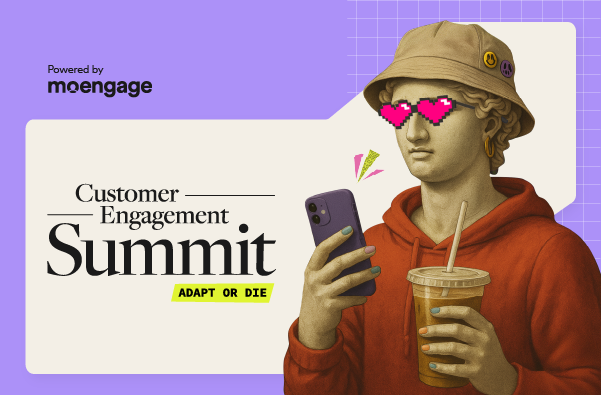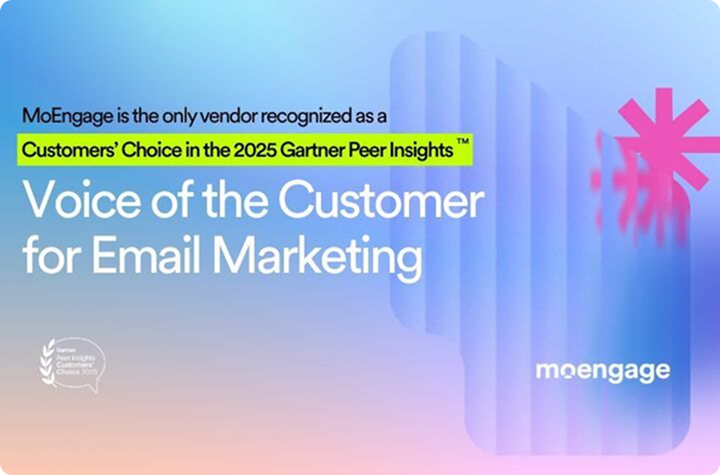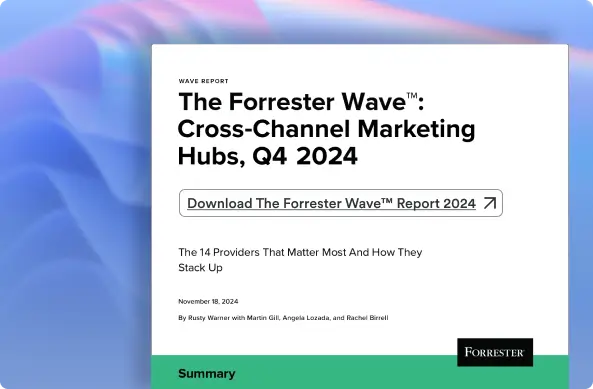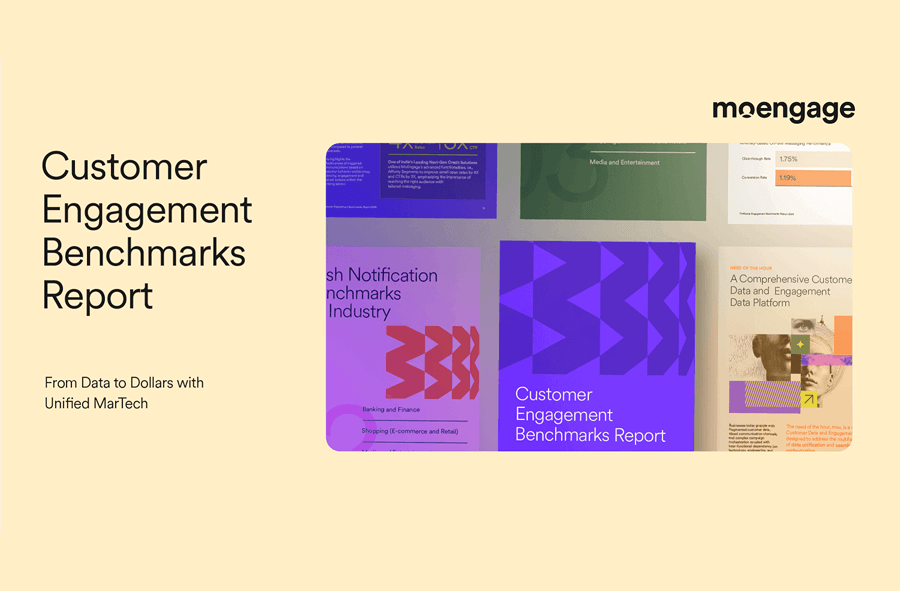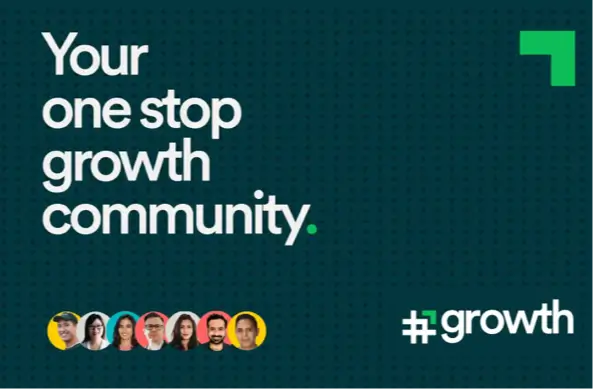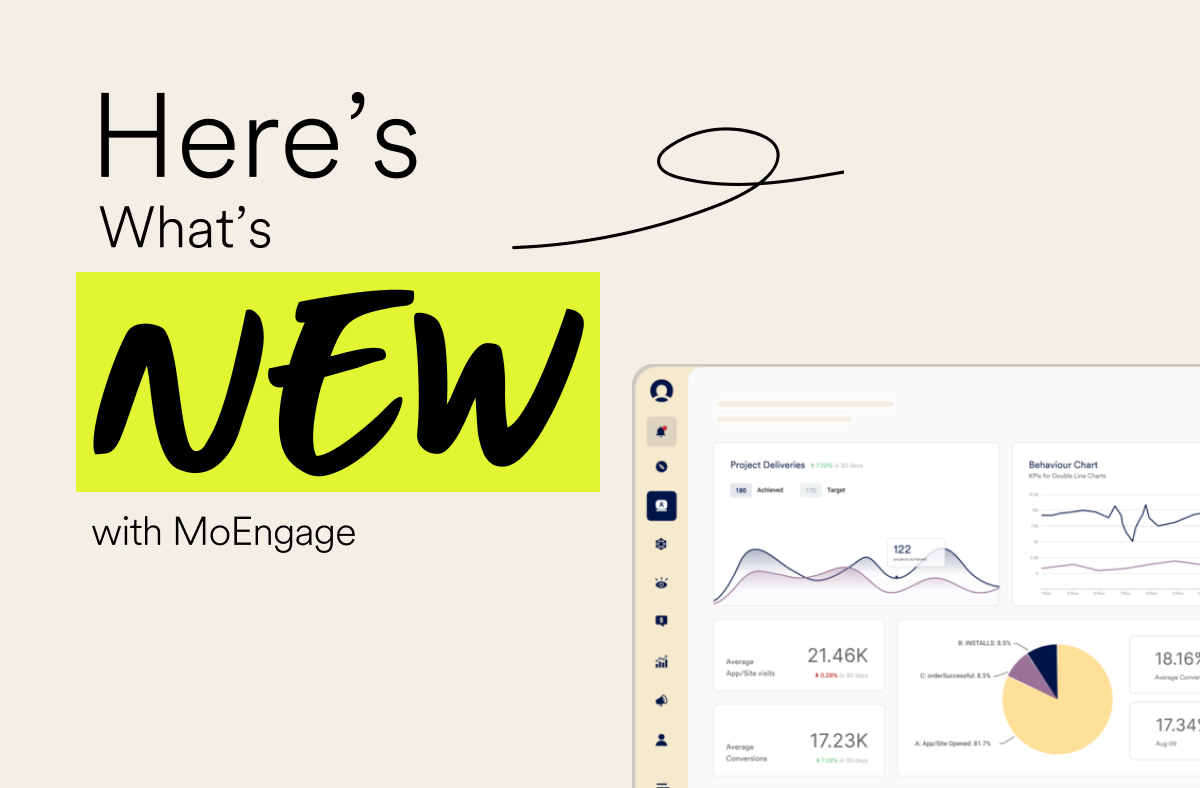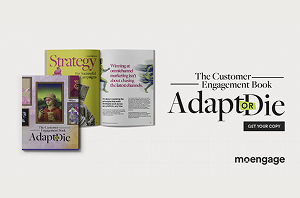Webinar Recap: Agentic AI and Customer Engagement in 2025 and Beyond
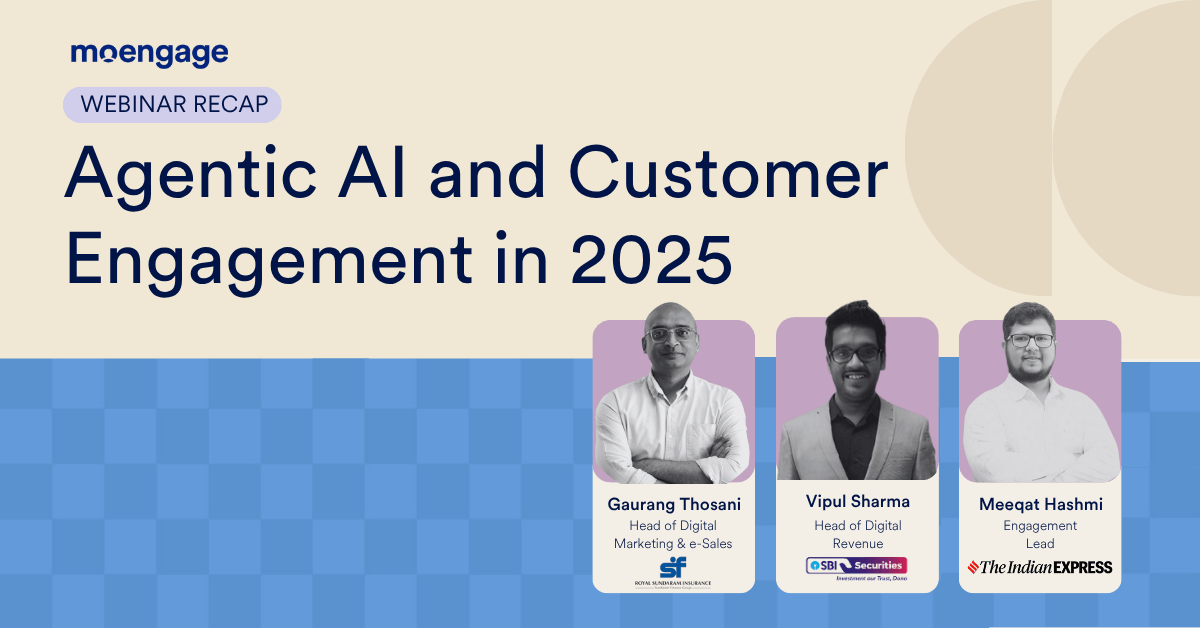
Reading Time: 5 minutes
The conversation around AI is shifting from “what is it?” to “how do we use it effectively and safely?” For marketers and business leaders, the potential is immense, but navigating the path to successful adoption requires a clear strategy, robust safety measures, and a focus on tangible results.
In our recent masterclass “Agentic AI and Customer Engagement in 2025 and Beyond” webinar, we gathered leaders from diverse sectors to uncover how they are capitalizing on AI while managing its complexities. Moderated by Kshitij Sharma of MoEngage, the panel featured deep insights from:
- Vipul Sharma, Head of Digital Revenue, SBI Securities
- Gaurang Thosani, Head Digital Marketing and e-Sales, Royal Sundaram Insurance
- Meeqat Hashmi, Engagement Lead, The Indian Express
They explored the entire lifecycle of AI adoption, from initial strategy and safety protocols to future-looking predictions. Here are the most critical takeaways.
Strategy is the #1 Challenge in AI Adoption
When we asked the attendees about their #1 challenge in adopting AI, the answer was clear: “a lack of strategy”. The panelists suggested following a structured approach and focusing on building a solid foundation.
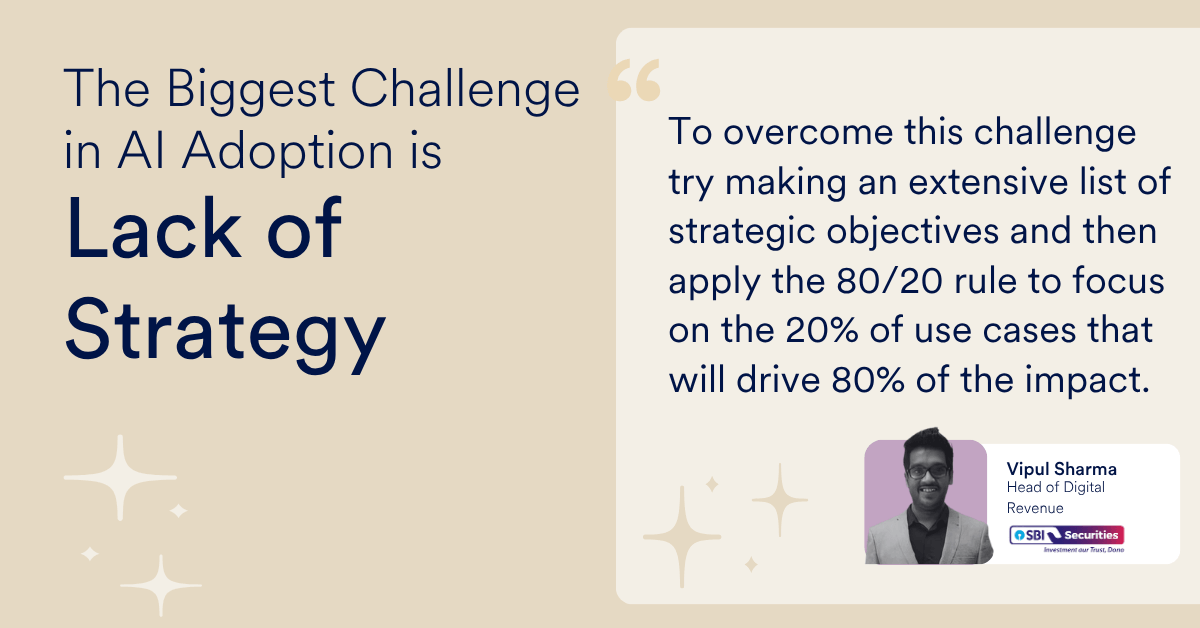
- Focus on high-impact initiatives: Don’t try to boil the ocean. Vipul Sharma recommends making an extensive list of strategic objectives and then applying the 80/20 rule to focus on the 20% of use cases that will drive 80% of the impact.
- Embrace an agile, phased approach: Perfect is the enemy of good. “The perfect output at day one… it can’t happen with AI,” Gaurang Thosani cautioned. He advised starting with a phased, agile approach, recognizing that AI involves a learning curve. “Go slow, one step at a time.”
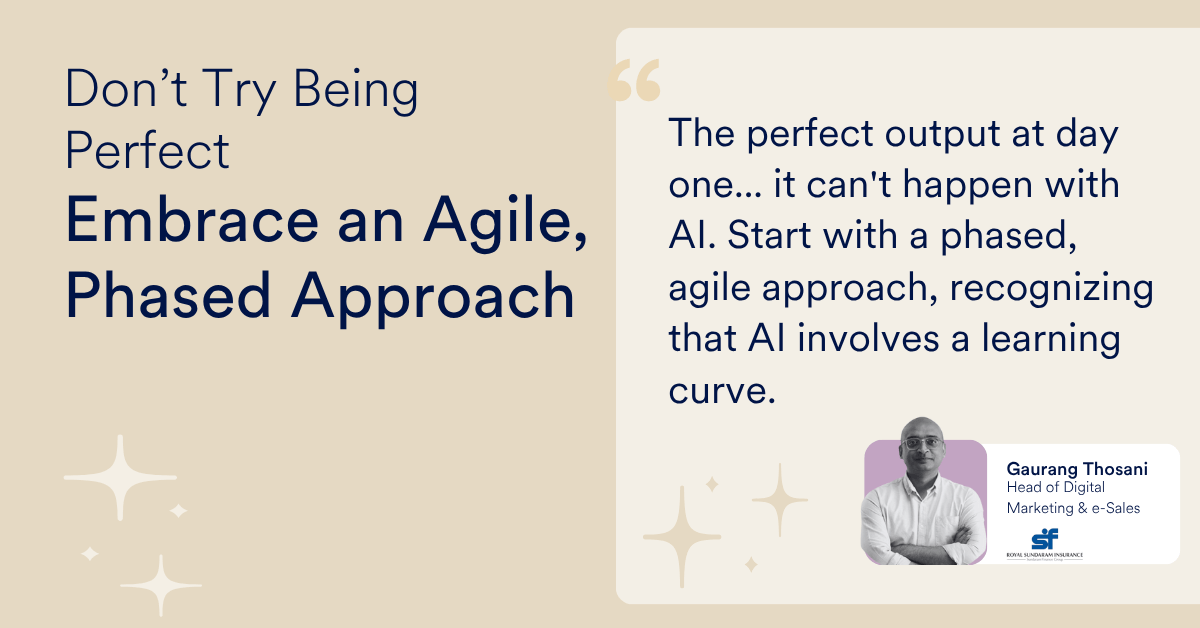
Establishing Privacy and AI Guardrails is Non-Negotiable
Before scaling AI, especially in regulated industries like Financial services, establishing trust and safety is paramount. The panelists stressed the importance of creating clear guardrails and suggested to –
- Prioritize data security: For Gaurang, a critical first step is ensuring all data resides within the country, a key requirement in the financial sector.
- Implement strict PII masking: When using AI to analyze customer interactions, such as transcribing support calls, it’s crucial to protect sensitive information. Gaurang explained their process: the AI transcribes the call after all personally identifiable information (PII) is masked.
- Set rules for data handling: To further secure data, the system is designed to delete the original voice recording within seconds of transcription, minimizing risk.
- Assess risk and start with low-stakes use cases: Vipul suggested categorizing potential AI projects into two groups: those that carry a high penalty if something goes wrong (like regulatory issues) and those with low impact. He advised, “Start with those use cases [that are low-risk] and then maybe move to the other ones where you feel there might be some hiccup.”
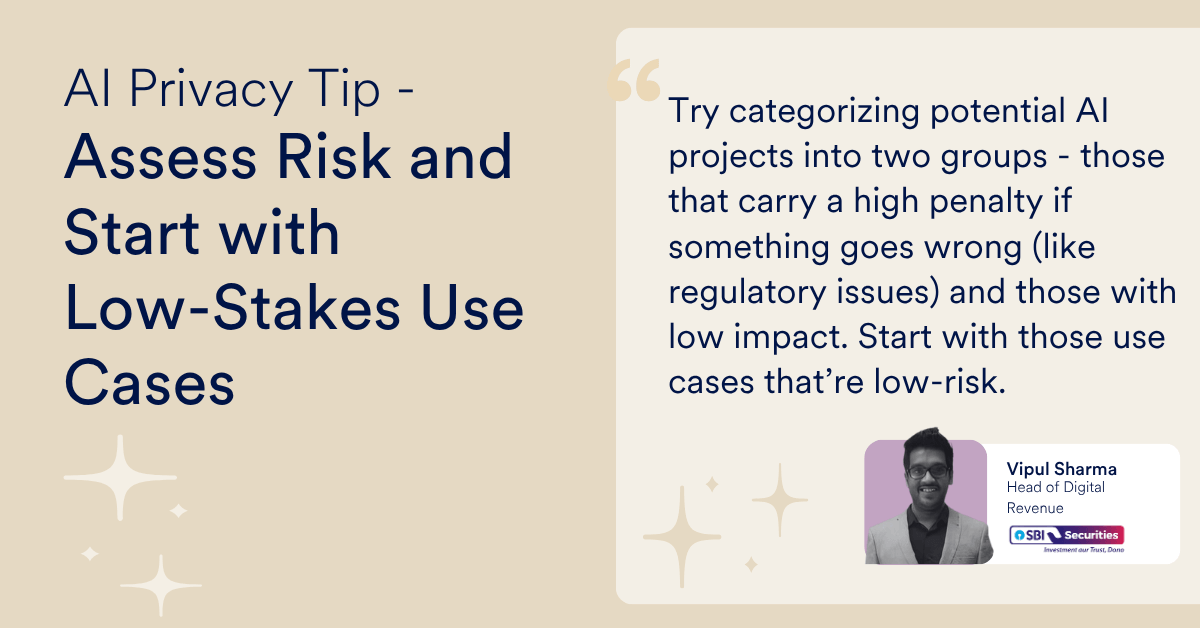
Examples of Industries Where AI is Delivering Real-World Wins
With a solid strategy and strong guardrails, businesses can unlock significant value across the customer lifecycle.
- Insurance: Gaurang explained the shift from “omni-channel” to “omni-context.” AI enables proactive engagement by understanding the customer’s context and needs. For example, if a customer has historically requested their tax certificate in mid-December, the system can now proactively send it to them during that time.
- Financial Services: For an organization with a massive customer base like SBI Securities, AI is critical for scaling customer support by handling basic queries. Vipul also highlighted its power in data analysis, where it can build complex lookalike models and refine the tonality of marketing messages for different customer cohorts.
- Publishing: Meekat noted that AI helps The Indian Express optimize content and headlines for specific audiences. It allows them to understand the user journey, identify interest in specific topics, and then plug in relevant content or subscription offers.
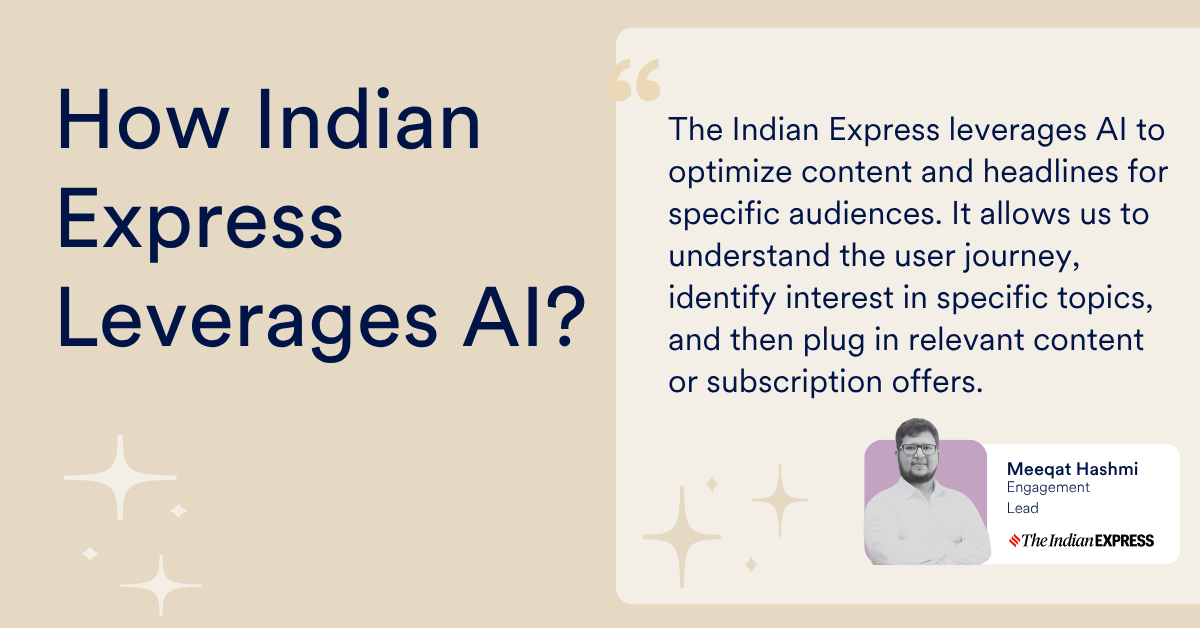
The Most Comprehensive AI Platform is Here – Merlin AI Suite
MoEngage’s AI-powered marketing platform revolutionizes customer engagement through Merlin AI.
Merlin AI Copy combines the power of LLMs with historical performance data to generate engaging content across multiple channels. It learns from past campaigns to identify high-performing keywords and create A/B testing variations instantly. Merlin AI Design generates visual content, helping marketers overcome creative blocks without switching platforms or heavy design team dependency. Merlin AI also powers AI-powered Smart Segmentation, custom customer journeys through Merlin AI Flow Assist, and decision-making through Decisioning Agent.
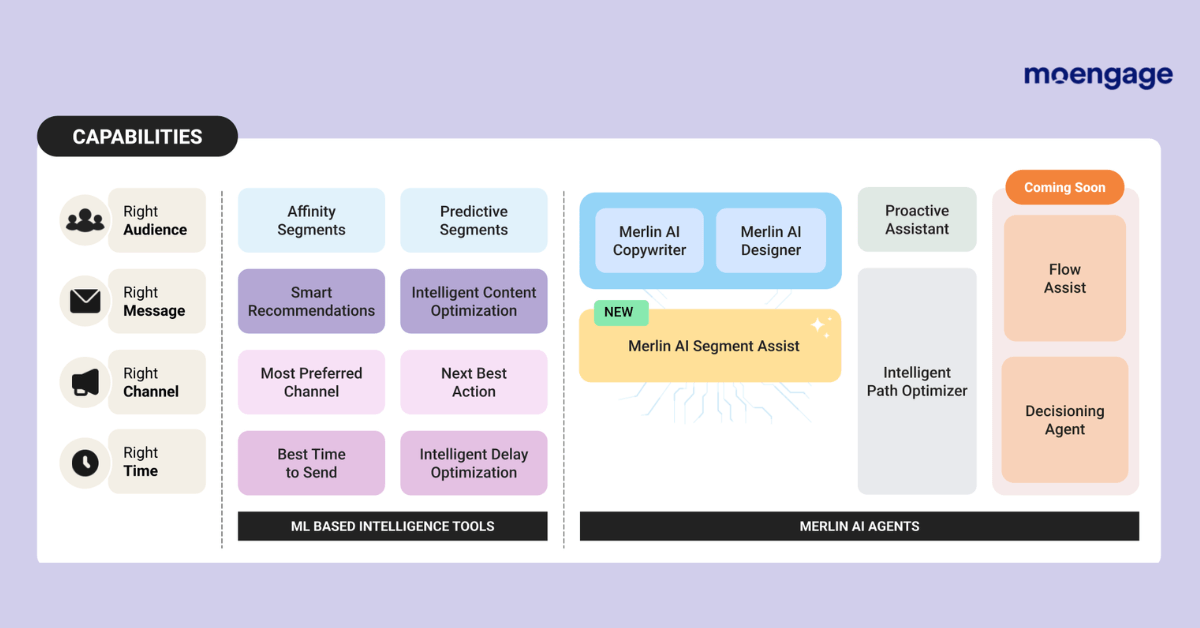 MoEngage AI Platform
MoEngage AI Platform
MoEngage’s AI tools help brands to automate marketing campaigns through machine learning, automatically optimizing audience targeting, messaging, channels, and timing without manual intervention. Our customers have seen incredible results with Merlin AI, for example, Glance, achieves 38% uplift in mobile push notification CTRs.
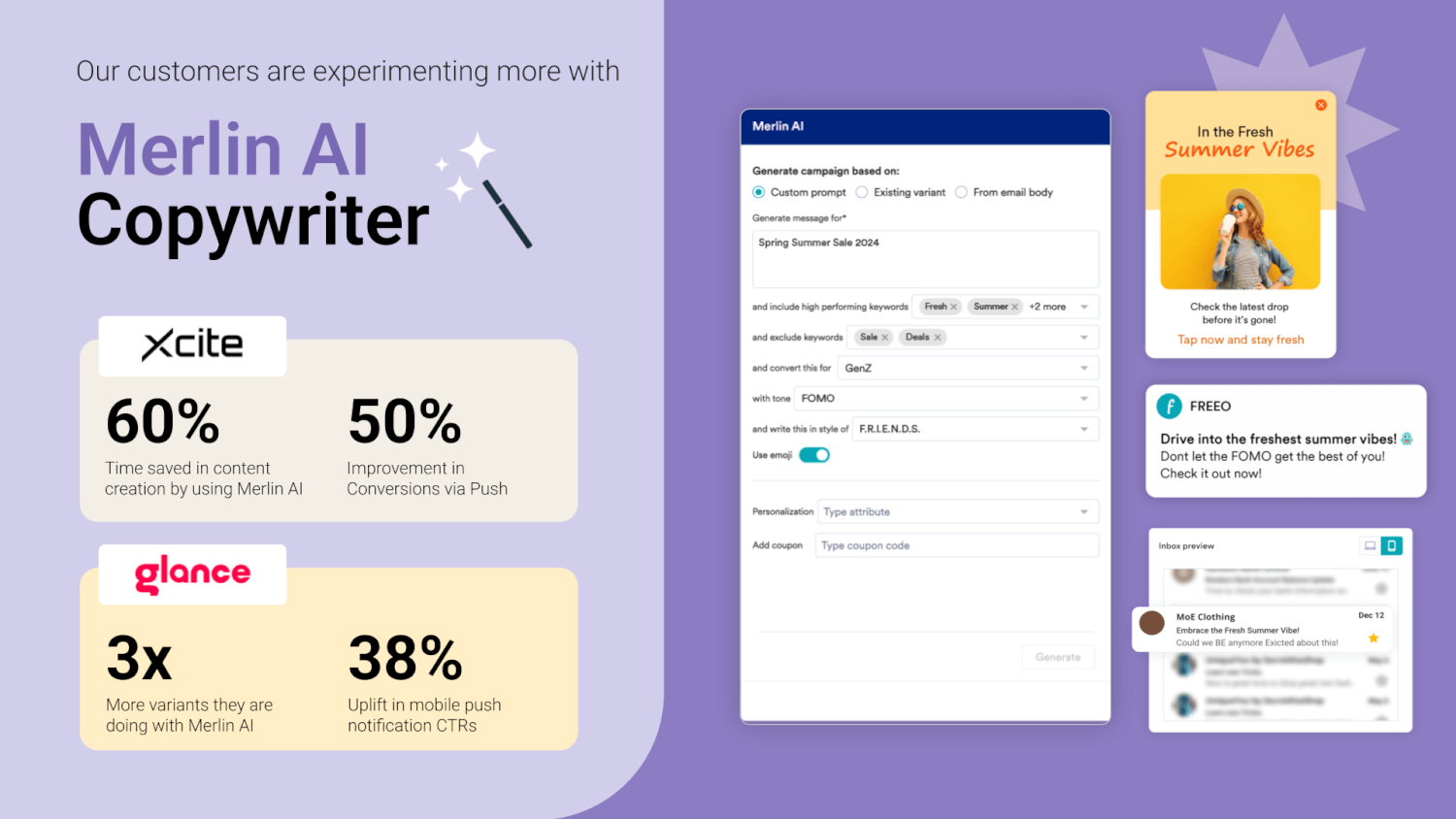
What’s Next for Agentic AI and Customer Engagement?
The panelists shared their predictions for the near future, painting a picture of an even more integrated and autonomous AI landscape.
- Personalization: Gaurang believes AI will become a trusted, neutral advisor. As AI assistants learn our preferences, they will provide recommendations so well-fitted that customers will rely on them for purchasing decisions.
- Fully Autonomous Campaigns: Vipul envisions a future where a marketer can write a single prompt, such as “reactivate customers,” and the AI will handle the entire workflow—from micro-segmentation and content creation to multi-channel delivery.
- Race to Adoption: Meekat introduced a dose of reality, citing a Gartner report predicting that high costs could make some agentic forces obsolete. His advice is to keep pace with technology, assuming it will become cheaper over time, but not to fall behind by waiting too long.
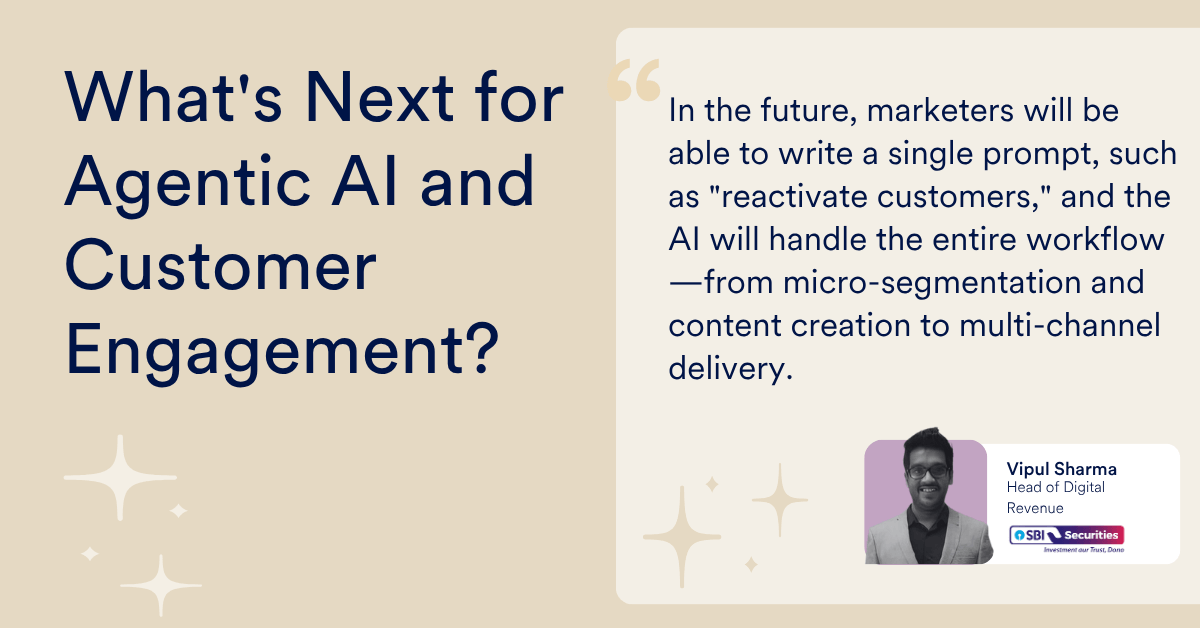
The Best Way to Start With AI?
For those wondering how to begin, Meekat offered a simple, practical tip: experiment with personal AI agents first. Try to automate your own calendar, train the agent, and observe how it works for a week. This hands-on, low-risk approach is the best way to grasp how AI agents function before deploying them for major business decisions.


